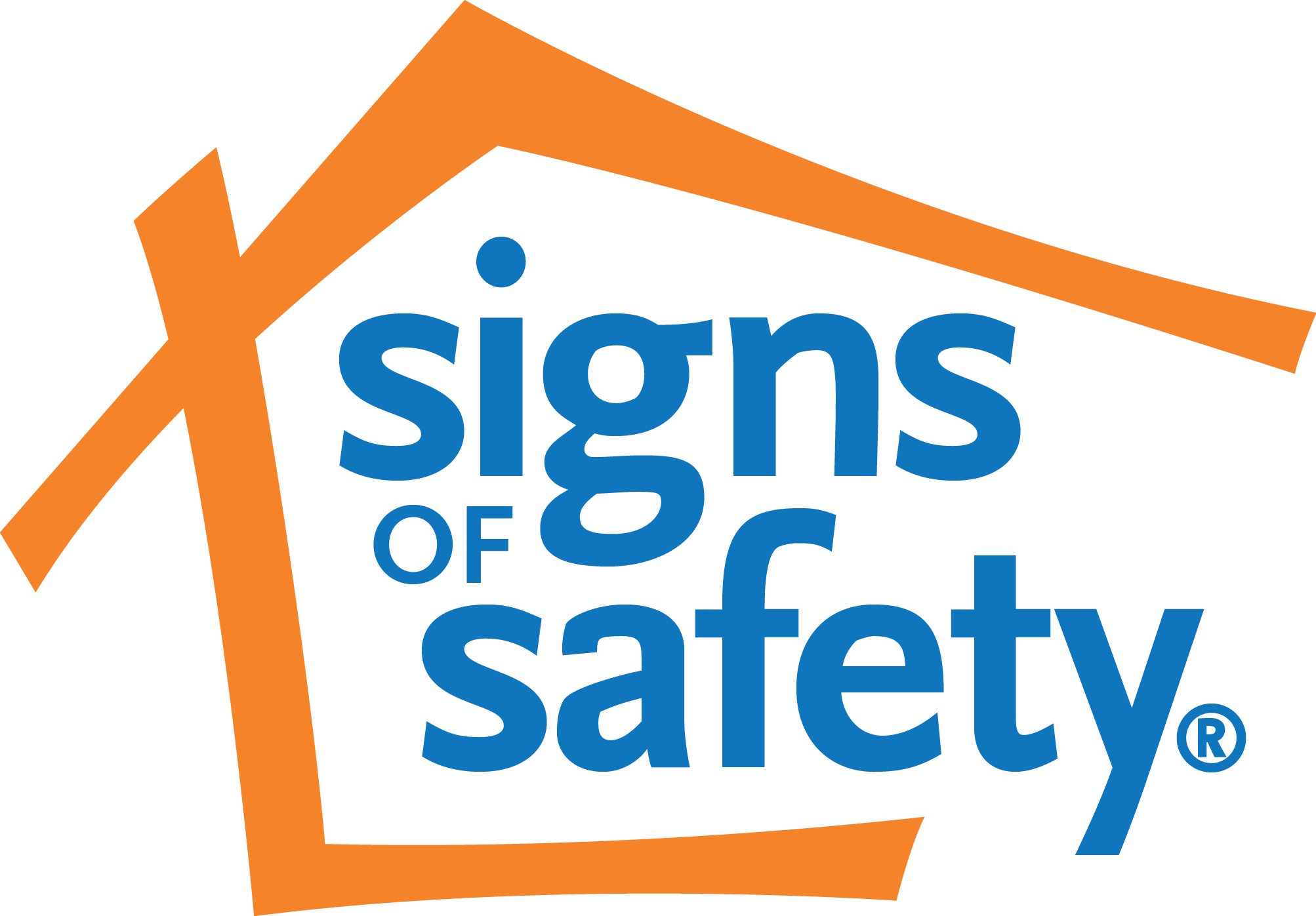The Contextual Safeguarding approach and the Signs of Safety assessment framework are used by local authorities in the UK to shape how they support children and families in need of support. In recognition of this, the teams behind each approach have started to work together to understand how they align, and can be used together, so that workers, families, children, young people and those in the broader community experience a collaborative approach.
 Signs of Safety, the assessment framework for Child Protection, also extends to Signs of Wellbeing for Early Help and Children in Need and Signs of Success for Children Looked After. It is an assessment and planning process aimed at keeping children, families and their naturally connected networks at the centre of the assessment and planning when there are worries about children’s safety, wellbeing or success. It is a safety-organised, strengths-based approach to the work with individual children and family groups. It is most successful when implemented as a ‘whole of system’ approach across the organisation. The core methods of the approach remain constant for the main. Everywhere the approach is used, it is adjusted for culture, context and the specific workflows of the organisation in which the approach is being used. This enables a consistent shared language and understanding of the tools and methods not only in different local authorities, but around the world where the Signs of Safety is being used in over 300 jurisdictions.
Signs of Safety, the assessment framework for Child Protection, also extends to Signs of Wellbeing for Early Help and Children in Need and Signs of Success for Children Looked After. It is an assessment and planning process aimed at keeping children, families and their naturally connected networks at the centre of the assessment and planning when there are worries about children’s safety, wellbeing or success. It is a safety-organised, strengths-based approach to the work with individual children and family groups. It is most successful when implemented as a ‘whole of system’ approach across the organisation. The core methods of the approach remain constant for the main. Everywhere the approach is used, it is adjusted for culture, context and the specific workflows of the organisation in which the approach is being used. This enables a consistent shared language and understanding of the tools and methods not only in different local authorities, but around the world where the Signs of Safety is being used in over 300 jurisdictions.
The Contextual Safeguarding approach is a whole system approach to understanding, and responding to, young people’s experiences of significant harm beyond their families. When adopting a Contextual Safeguarding approach, local areas in England, Wales and Scotland are developing systems, partnership and practices that can:
- target the contexts in which extra-familial harm occurs, and not solely the individuals affected by that harm;
- ensure a child welfare, and where required child protection, response to extra-familial harm beyond community safety and policing practices;
- support partnerships with sectors and individuals who have a reach into extra-familial settings where young people spend their time (such as responsibility for school, transport, leisure and retail), and;
- measure its impact on the contexts where young people were vulnerable to abuse or harm (rather than just focusing on a change in the behaviour of individuals who spend time in harmful spaces).
As practitioners, researchers, and model or approach developers, we know that importance of clarity for leaders and workers and workflow alignment are critical to create an environment where the work of increasing the safety of children and young people can get done. The work in children’s services is hard and the process for completing assessments and plans should aim, wherever possible, to simplify the complexity, while enabling a rigorous approach to the work. Our best hope is that practitioners will have clarity about how Signs of Safety and Contextual Safeguarding approach dovetail and how Signs of Safety resources can be applied to extra-familial, as well as familial, challenges and contexts as Signs of Safety is a process model of assessment rather than content-driven model. At its simplest, the Signs of Safety (and its derivations) is applied by bringing together everyone that is naturally involved with the people who are facing the particular problems so as a group they can think though the core questions:
- What are we worried about?
- What’s working well?
- What needs to happen?
- Where would you rate this situation from 0 — the problem is at its worst, and 10 — the problem is solved, where would you rate this today?
This process is applicable to any context and human problems and endeavour as the questions can be applied to a discussion of a peer group or public space, and the challenges and safety young people experience there, as much as to a family network. Whilst applied in many creative ways, to date, the primary focus of practice and research of Signs of Safety has been within children and families. We are hopeful that by taking the practice methods and tools of Signs of Safety and working alongside the Contextual Safeguarding Programme in the contextual and extra-familial space, new learning may emerge to further evolve and expand our work.
The Contextual Safeguarding approach is implemented in different ways to maximise existing partnerships and operating models and reflect local demographics. As areas develop their Contextual Safeguarding approach, they create practice tools, policies and activities which reflect, or allow them to scale, their efforts. These resources are captured by the Contextual Safeguarding Programme research team and disseminated via their online virtual hub. Three of the formal Contextual Safeguarding approach test sites use the Signs of Safety approach providing an opportunity for us to develop, adjust, trial and tweak Signs of Safety resources that they use as they build their Contextual Safeguarding approach1. We hope that this process will also advance how we understand, and potentially implement, both Contextual Safeguarding Programme and Signs of Safety. We will also share any points of diversion between the two approaches or where further work or testing is required beyond what we have initially planned. We will do this with practitioners in the field taking their feedback to improve their experience and understanding, to in turn improve the family’s and community’s experience with children’s services. This will include, where relevant, the information systems used by some local authorities.
1 Other sites who do not use a Signs of Safety approach are also developing their Contextual Safeguarding system, and their resources will also be documented and shared nationally as a point of comparison.
